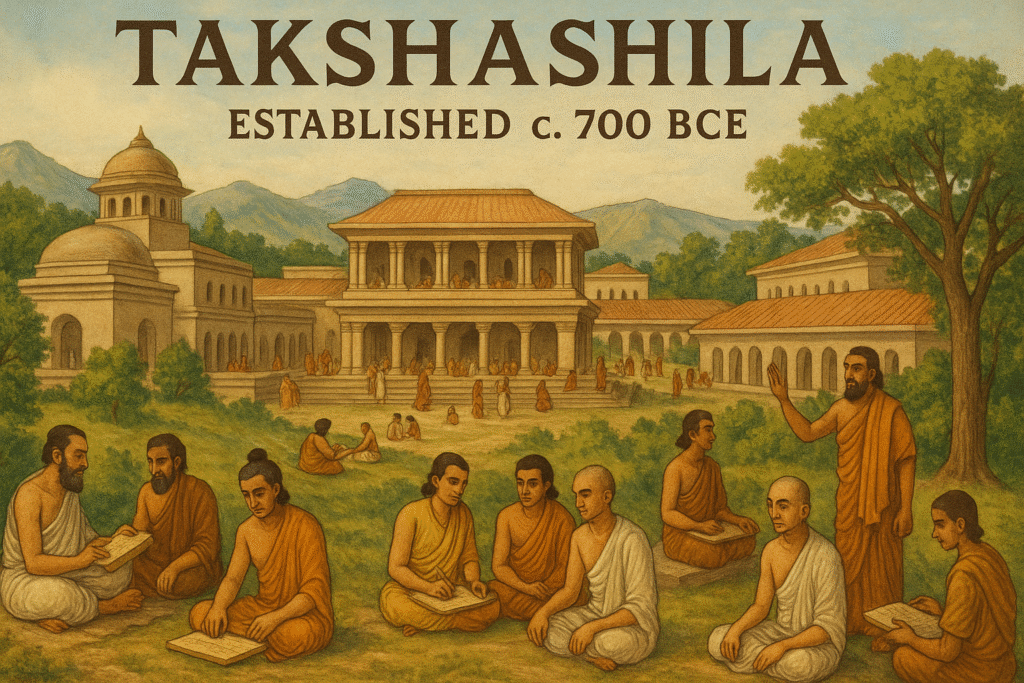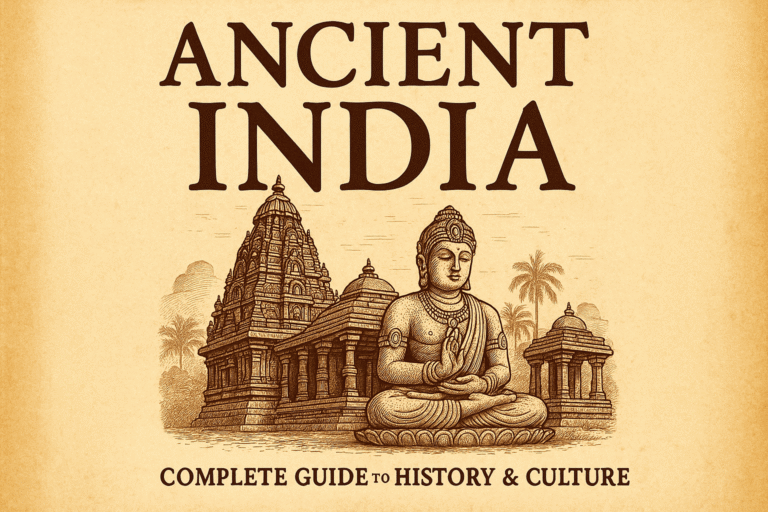<meta name='impact-site-verification' value='34369dc5-877c-4282-90a9-36f86721ccfa'>
10 Fun Facts About Ancient India You Didn’t Know
Ancient India stands as one of history’s most remarkable civilizations, with contributions that continue to shape our modern world. From groundbreaking mathematical concepts to sophisticated urban planning, this ancient civilization established foundations that influenced countless aspects of human development. The subcontinent’s rich historical tapestry reveals innovations and achievements that frequently surpass contemporary understanding of ancient capabilities.
These fun facts about ancient India demonstrate the civilization’s advanced knowledge systems, technological innovations, and cultural developments that occurred thousands of years ago. Each discovery provides insight into a society that prioritized learning, health, commerce, and systematic organization across multiple domains of human activity.
1.The Indus Valley Civilization’s Advanced Urban Planning
The Indus Valley Civilization, flourishing from approximately 3300 to 1300 BCE, demonstrated urban planning capabilities that rival modern city design principles. Archaeological evidence from Harappa and Mohenjo-daro reveals meticulously planned cities with standardized brick sizes, grid-pattern streets, and sophisticated infrastructure systems.
These ancient cities featured multi-story buildings constructed with uniform fired bricks, indicating centralized planning and quality control measures. The standardization extended to weights and measures, suggesting a well-organized administrative system that governed trade and construction activities across the civilization.
The urban centers incorporated advanced water management systems, including covered drains, public wells, and private bathrooms in residential areas. This level of sanitation infrastructure demonstrates a sophisticated understanding of public health principles that would not be matched in many parts of the world for millennia.
2.The Concept of Zero Originated in India
Ancient India’s mathematical contributions fundamentally transformed global computational systems through the development of the concept of zero. The mathematician Brahmagupta, working in the 7th century CE, provided the first systematic treatment of zero as both a number and a mathematical concept.
This innovation enabled the development of the decimal system and positional notation, allowing for complex mathematical calculations that were previously impossible. The concept spread through Islamic scholars to Europe, where it revolutionized mathematical and scientific advancement.
The mathematical treatise “Brahmasphutasiddhanta” documented rules for mathematical operations involving zero, establishing foundational principles that continue to underpin modern mathematics, computer science, and engineering disciplines.
3.Ancient India’s Contributions to Medicine and Surgery
Ancient Indian medical practices, documented in texts such as the Charaka Samhita and Sushruta Samhita, established comprehensive medical knowledge systems that included surgical procedures, pharmaceutical preparations, and diagnostic methodologies.
Sushruta, often regarded as the father of surgery, described over 300 surgical procedures and 120 surgical instruments in his medical treatise. These procedures included cataract surgery, plastic surgery techniques, and complex abdominal operations that demonstrated advanced anatomical knowledge.
The ancient Indian medical system incorporated detailed understanding of human anatomy, disease classification, and treatment protocols. Medical practitioners utilized sophisticated diagnostic techniques, including pulse examination and symptom analysis, to determine appropriate therapeutic interventions.
4.The Sophisticated Drainage System in Mohenjo-daro
Mohenjo-daro’s drainage system represents one of the most advanced waste management infrastructures of the ancient world. The city featured a comprehensive network of covered drains constructed with precise engineering specifications to ensure efficient waste removal.
Every house connected to the main drainage system through smaller drains, creating a unified waste management network that served the entire urban population. The drains were constructed with sloped floors to facilitate water flow and included maintenance access points for cleaning and repairs.
The system incorporated settling tanks and inspection chambers that allowed for waste processing and system maintenance. This infrastructure demonstrates sophisticated understanding of hydraulic engineering principles and public health considerations that prioritized community sanitation.
5.The World’s First University Was in Takshashila

Takshashila, established around 700 BCE, functioned as the world’s first organized university, attracting students from across Asia for advanced learning in multiple disciplines. The institution offered systematic education in subjects including mathematics, astronomy, medicine, politics, and philosophy.
The university operated with structured curricula, qualified faculty, and standardized examination systems. Students underwent rigorous academic training that could extend for several years, depending on their chosen field of specialization.
Notable alumni included Chandragupta Maurya and Chanakya, who contributed significantly to political theory and administrative practices. The institution’s influence extended across ancient Asian civilizations, establishing educational frameworks that influenced subsequent academic institutions.
6.Chess Originated in India
The strategic board game known as chess originated in ancient India as “Chaturanga,” developed during the Gupta period around the 6th century CE. This precursor to modern chess incorporated four divisions of military forces: infantry, cavalry, elephants, and chariots.
Chaturanga’s strategic elements and piece movements established the foundational principles that evolved into contemporary chess rules. The game spread through Persian and Arab traders to Europe, where it underwent further modifications to become the chess played internationally.
The game’s complexity and strategic depth reflected ancient Indian understanding of military tactics and strategic planning. Archaeological evidence and literary references confirm chess’s Indian origins and its subsequent global dissemination through trade networks.
7.Yoga’s Ancient Origins
Yoga emerged in ancient India as a comprehensive system combining physical postures, breathing techniques, and meditation practices. The practice is documented in ancient texts including the Yoga Sutras of Patanjali, compiled around 400 CE.
Archaeological evidence from the Indus Valley Civilization includes seals depicting figures in yoga-like postures, suggesting the practice’s existence over 5,000 years ago. The systematic development of yoga philosophy integrated physical, mental, and spiritual dimensions of human development.
The ancient practitioners developed detailed classifications of yoga techniques, including Hatha Yoga, Raja Yoga, and Karma Yoga, each addressing different aspects of human consciousness and physical well-being. These practices influenced spiritual and philosophical traditions across multiple cultures.
8.The Art of Ayurveda
Ayurveda, the ancient Indian system of medicine, established comprehensive healthcare approaches that emphasized prevention, diagnosis, and treatment through natural methods. The system classified human constitution into three doshas: Vata, Pitta, and Kapha.
Ayurvedic practitioners developed extensive pharmacological knowledge, utilizing thousands of plant-based medicines and mineral preparations. The system incorporated detailed dietary guidelines, lifestyle recommendations, and therapeutic procedures tailored to individual constitutional types.
The holistic approach integrated physical, mental, and spiritual aspects of health, establishing treatment protocols that addressed root causes rather than merely symptoms. This comprehensive medical system influenced healing traditions across Asia and continues to inform modern integrative medicine approaches.
9.The Story of the Stepwells
Stepwells, known as “baolis” or “vavs,” represent unique architectural and engineering achievements that addressed water storage and access challenges in arid regions. These structures combined functional water management with intricate architectural design.
The stepwell construction involved excavating deep shafts with stepped sides, allowing access to groundwater levels throughout seasonal variations. The structures incorporated architectural elements including pillars, arches, and decorative carvings that transformed utilitarian infrastructure into artistic monuments.
Famous stepwells like the Rani ki Vav in Gujarat demonstrate sophisticated engineering capabilities and artistic achievements. These structures served multiple functions including water storage, community gathering spaces, and places of worship, reflecting the integration of practical and cultural considerations in ancient Indian architecture.
10.India’s Maritime History and Trade Routes
Ancient India established extensive maritime trade networks that connected the subcontinent with Southeast Asia, the Middle East, and Africa. Archaeological evidence reveals sophisticated shipbuilding techniques and navigational knowledge that enabled long-distance ocean voyages.
Indian merchants and sailors utilized monsoon patterns for navigation, developing seasonal trading schedules that maximized favorable wind conditions. The maritime trade included valuable commodities such as spices, textiles, precious stones, and manufactured goods.
The ancient ports of Lothal, Bharuch, and Puhar functioned as major commercial centers with advanced docking facilities and trade administration systems. These maritime connections facilitated cultural exchange and economic prosperity that influenced ancient Indian civilization’s development and global interactions.
Understanding Ancient India’s Lasting Impact
The examination of these fun facts about ancient India reveals a civilization that achieved remarkable innovations across multiple domains of human knowledge and activity. From mathematical concepts that revolutionized computation to medical practices that established surgical principles, ancient India’s contributions continue to influence modern society.
The systematic approach to urban planning, education, and healthcare demonstrates sophisticated organizational capabilities that prioritized public welfare and knowledge advancement. These achievements provide valuable insights into human civilization’s capacity for innovation and systematic development.
Contemporary understanding of ancient Indian accomplishments encourages appreciation for historical knowledge systems and their continued relevance to modern challenges. The integration of practical solutions with cultural values offers timeless principles for sustainable development and human progress.



There are some attention-grabbing deadlines in this article but I don’t know if I see all of them center to heart. There’s some validity however I will take hold opinion until I look into it further. Good article , thanks and we would like more! Added to FeedBurner as well
Hello, i think that i saw you visited my weblog so i came to “return the favor”.I am attempting to find things to enhance my website!I suppose its ok to use a few of your ideas!!